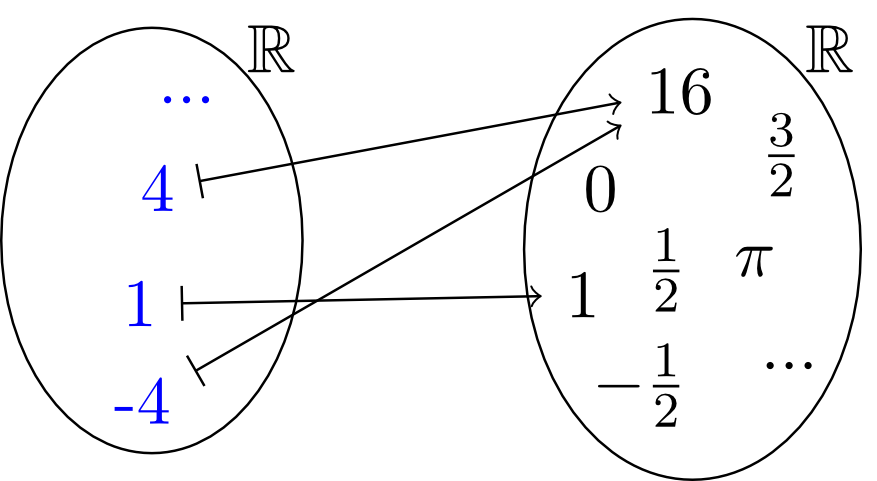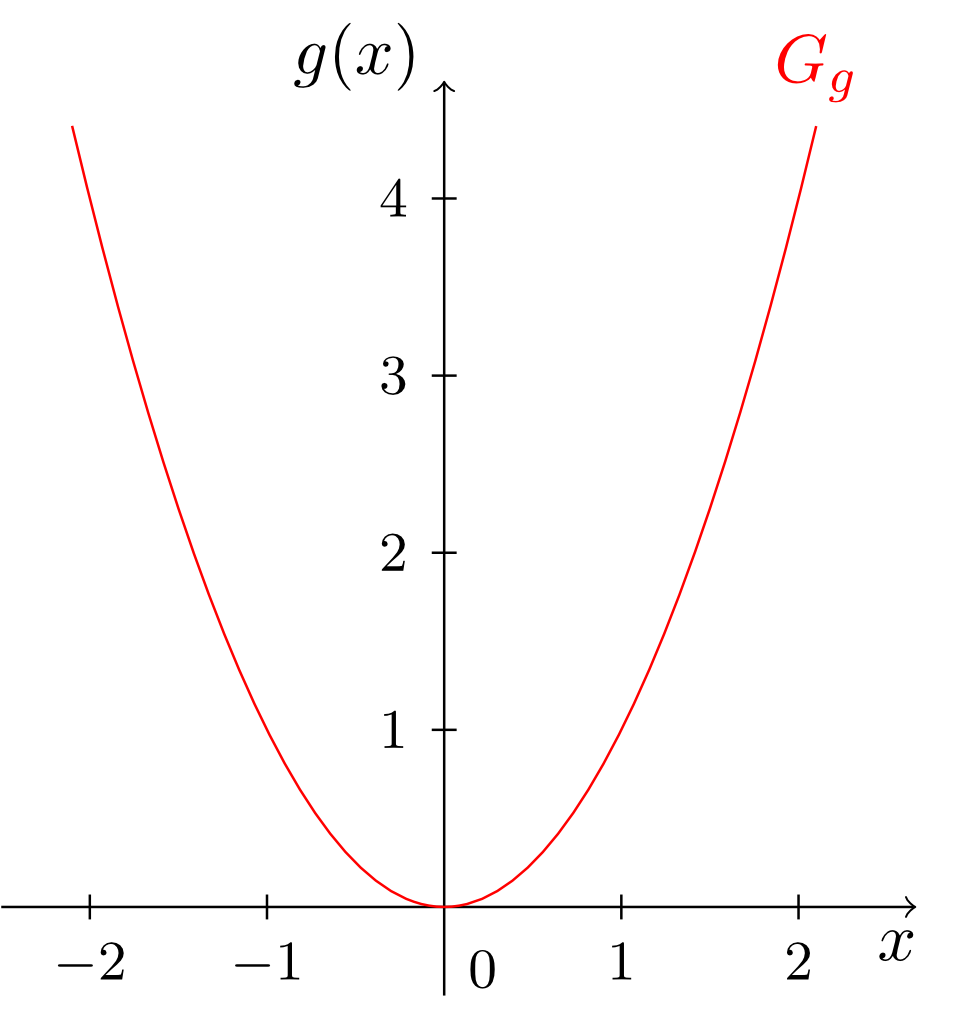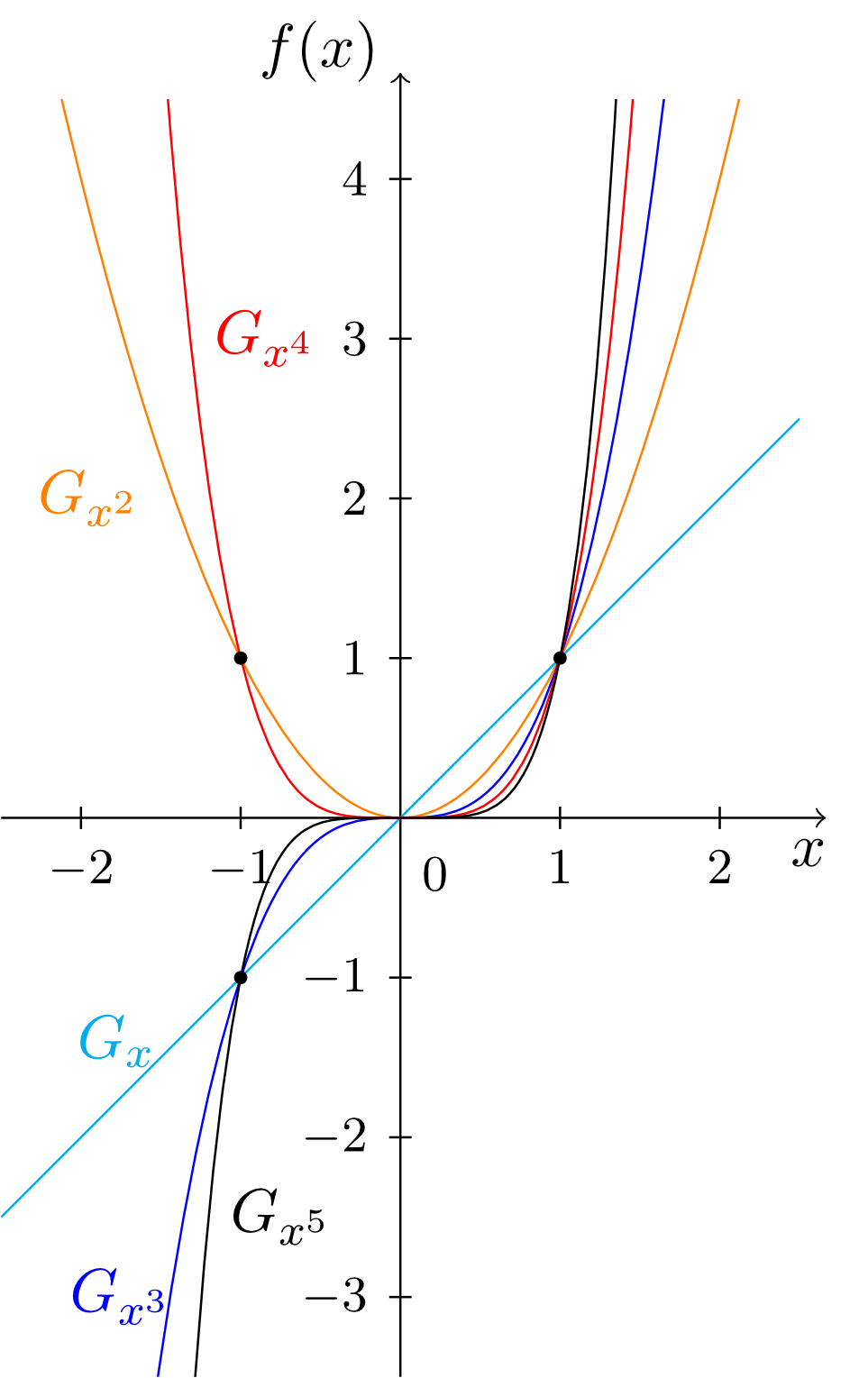Chapter 6 Elementary Functions
Section 6.2 Linear Functions and Polynomials6.2.6 Monomials
In addition to the linear affine functions studied in the previous section, we can also think of functions that assign to every real number a non-negative integer power of the number. An example is the function

This works for every non-negative integer exponent, and generally this function is written as
with , and it is called a monomial. The exponent of a monomial is called the degree of the monomial. For example, the function described at the beginning of this section is a monomial of degree .
Exercise 6.2.10
Which functions are the monomials of degree and ?

On the basis of these graphs, we now summarise some conclusions on monomials: There is a fundamental difference between monomials (with the mapping rule , ) of even and odd degree. The range of monomials of an even non-zero degree is always the set , while monomials of odd degree have the range . Furthermore, we always have
and
Moreover, we have
Exercise 6.2.11
How can our conclusions concerning monomials be seen immediately from the exponent rules?
 Onlinebrückenkurs Mathematik
Onlinebrückenkurs Mathematik